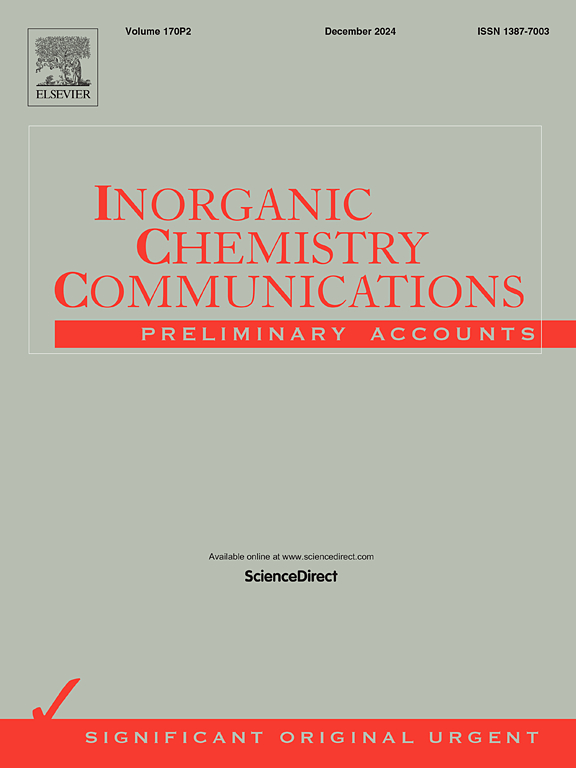Fabrication and electrochemical characterization of RGO-Y2O3: Eu3+/Li+ nanocomposite modified glassy carbon electrode for enhanced dopamine detection
IF 4.4
3区 化学
Q1 CHEMISTRY, INORGANIC & NUCLEAR
引用次数: 0
Abstract
The hydrothermal approach was used to produce the RGO-Y2O3:Eu3+/Li+ nanocomposites (NCs). XRD, SEM and TEM were used to characterize the synthesized NCs structure and morphology. The synthesized Y2O3:Eu3+/Li+ nanoparticles (NPs) depicted uniform spherical shape structures distributed on the RGO surface. XRD analysis confirmed the presence of cubic phase in all synthesized NCs, confirming their excellent crystallinity. The NCs were employed to make modified glassy carbon electrodes (MGCE) for dopamine (DA) electrochemical detection at pH 7. The redesigned electrodes offer adequate current responsiveness for DA voltammetry. Different variables such as scan rate, pH, and DA concentration were examined. The linear range for dopamine used in this study was 2–10 mM and detection limit was found to be 1.4846 mM only when DA was present and 1.0145 mM in presence of uric acid respectively. Cyclic voltammetry was used to measure DA in the presence of Uric Acid (UA), and differential pulse voltammetry was used to measure DA selectivity. The modified electrode recovered 91.67 % and was stable. As a result, the manufactured electrode appears to be promising for DA detection.

RGO-Y2O3: Eu3+/Li+纳米复合修饰玻碳电极的制备及电化学表征
采用水热法制备了 RGO-Y2O3:Eu3+/Li+ 纳米复合材料(NCs)。利用 XRD、SEM 和 TEM 表征合成的 NCs 结构和形态。合成的 Y2O3:Eu3+/Li+ 纳米粒子(NPs)呈均匀的球形结构,分布在 RGO 表面。XRD 分析证实了所有合成的 NCs 均为立方相,证明其具有极佳的结晶性。利用这些 NCs 制作了改性玻璃碳电极 (MGCE),用于 pH 值为 7 的多巴胺(DA)电化学检测。对扫描速率、pH 值和 DA 浓度等不同变量进行了研究。本研究中使用的多巴胺的线性范围为 2-10 mM,检测限分别为 1.4846 mM(DA 存在时)和 1.0145 mM(尿酸存在时)。循环伏安法用于测量存在尿酸(UA)时的 DA,微分脉冲伏安法用于测量 DA 的选择性。改良电极的回收率为 91.67%,而且很稳定。因此,制造的电极有望用于 DA 检测。
本文章由计算机程序翻译,如有差异,请以英文原文为准。
求助全文
约1分钟内获得全文
求助全文
来源期刊

Inorganic Chemistry Communications
化学-无机化学与核化学
CiteScore
5.50
自引率
7.90%
发文量
1013
审稿时长
53 days
期刊介绍:
Launched in January 1998, Inorganic Chemistry Communications is an international journal dedicated to the rapid publication of short communications in the major areas of inorganic, organometallic and supramolecular chemistry. Topics include synthetic and reaction chemistry, kinetics and mechanisms of reactions, bioinorganic chemistry, photochemistry and the use of metal and organometallic compounds in stoichiometric and catalytic synthesis or organic compounds.
 求助内容:
求助内容: 应助结果提醒方式:
应助结果提醒方式:


